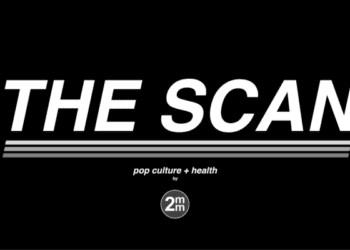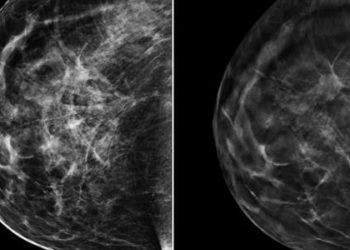Breast ultrasound sensitive for cancer and carries a low false positive rate [Classics Series]
This study summary is an excerpt from the book 2 Minute Medicine’s The Classics in Medicine: Summaries of the Landmark Trials
1. In a large cohort of women referred for evaluation of one or more solid breast lesions, ultrasound (US) showed a sensitivity of 98.4% for malignancy and was associated with a negative predictive value of 99.5%.
Original Date of Publication: July 1995
Study Rundown: At the time of this study, US was used to help identify simple breast cysts, a common and benign finding that can initially generate concern when identified on mammography. Given the success of US in this area, numerous attempts were made to expand the technology’s use to include other indeterminate breast lesions, particularly solid masses. Initial studies were unsupportive, however, and multiple guideline sets were published explicitly recommending against the use of US for solid breast mass evaluation. Given dramatic improvements in the resolution and functional capabilities of US, however, this issue was revisited in 1995 with publication of this prospective trial. A large cohort of women with suspicious breast lesions referred for breast US were evaluated over several years. Only women with solid lesions were considered. All women underwent biopsy following their US, and biopsy and imaging results were compared to determine the diagnostic performance of US. Results revealed that, contrary to prior data, US was highly sensitive for malignancy in solid breast masses. Conversely, in the absence of concerning imaging features, US appropriately excluded malignancy with few diagnostic errors. Strengths of the trial included its prospective methodology, the large number of patients successfully enrolled, and the low attrition rate. The primary limitations of the trial included heterogeneous biopsy methods and the inherent variability associated with subjective rating scales. Today, breast US remains a substantial component of the breast imager’s toolkit and is routinely used for solid breast mass evaluation.
Click to read the study in Radiology
In-Depth [prospective cohort]: A total of 662 patients (mean age 47 years) with suspicious breast lesions were prospectively enrolled over an approximately 4-year period following referral for breast US. The most common reason for referral was an antecedent abnormal mammogram. A total of 750 solid nodules were evaluated by US. Studies were blindly interpreted by 5 breast radiologists and findings were classified as “benign” or “malignant” based on the presence or absence of several previously-published imaging features. When no features were present, a classification of “indeterminate” was made. When available, initial mammograms and their interpretations were also reviewed. All enrolled patients subsequently underwent either core needle or excisional biopsy for definitive pathologic diagnosis. These final diagnoses were compared with imaging results to determine the diagnostic performance of US in the evaluation of suspicious solid breast lesions. Pathologic examination revealed 625 (83%) benign nodules and 125 (17%) malignant nodules. The most common malignant lesion was infiltrating ductal adenocarcinoma, and the most common benign lesion was fibroadenoma. One hundred (73%) of the 137 malignant nodules were correctly diagnosed by US. The overall sensitivity and specificity for breast US in the detection of malignancy were 98.4% and 67.8%, respectively. Due to a high false positive rate, the positive predictive value was 38%, while the negative predictive value was 99.5%, with only 2 false positive examinations. Twenty-seven nodules that were interpreted as malignant or indeterminate by US had been previously interpreted as definitively or probably benign by mammography. An additional 44 nodules accurately interpreted as malignant by US were interpreted as indeterminate by mammography. The US features most strongly associated with malignancy were spiculation (OR 5.5), taller-than-wider shape (OR 4.9), and angular margins (OR 4.0).
Stavros AT, Thickman D, Rapp CL, Dennis MA, Parker SH, Sisney GA. Solid breast nodules: use of sonography to distinguish between benign and malignant lesions. Radiology. 1995 Jul 1;196(1):123–34.
©2022 2 Minute Medicine, Inc. All rights reserved. No works may be reproduced without expressed written consent from 2 Minute Medicine, Inc. Inquire about licensing here. No article should be construed as medical advice and is not intended as such by the authors or by 2 Minute Medicine, Inc.


![2MM: AI Roundup- AI Cancer Test, Smarter Hospitals, Faster Drug Discovery, and Mental Health Tech [May 2nd, 2025]](https://www.2minutemedicine.com/wp-content/uploads/2025/05/Untitled-design-350x250.png)



![The ABCD2 score: Risk of stroke after Transient Ischemic Attack (TIA) [Classics Series]](https://www.2minutemedicine.com/wp-content/uploads/2013/05/web-cover-classics-with-logo-medicine-BW-small-jpg-75x75.jpg)
